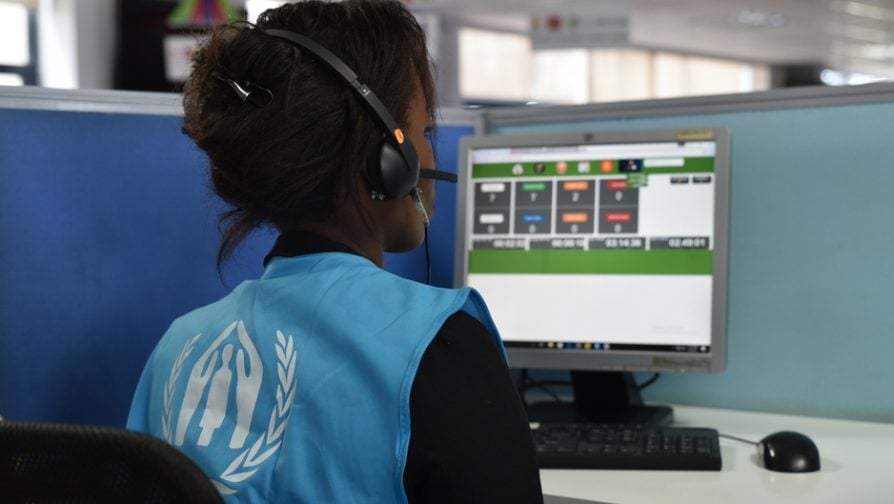Urban Areas

UNHCR Kenya launched a helpline to enable refugees to have access to information without coming to the office physically. Refugees, asylum-seekers and new arrivals will now be able to channel their queries and requests through this innovative approach. The toll free number, 0800720063, is expected to improve Individual Case Management (ICM). UNHCR/Modesta Ndubi
source https://www.unhcr.org/ke/urban-areas
The Urban refugee program caters for 80,750 (as at the end of
July 2020) asylum-seekers and refugees residing mainly in
Nairobi and other urban locations including Mombasa, Nakuru,
Eldoret, Kitale, Meru-Maua, Isiolo and Bungoma.
The protection environment in urban areas remains complex and unpredictable
as refugees continue to be associated with insecurity and the encampment policy
remains in force despite a Court of Appeal decision to the contrary. Consequently, UNHCR continues to prioritize the preservation of urban asylum space, promote access to asylum and respect for the principle of non-refoulement.
Systematic monitoring of border areas and detention facilities as well as capacity building of law enforcement, immigration officers and other relevant stakeholders thus remain integral. Hand-in-hand with this is the continued provision of legal aid and representation as well as supporting the ongoing Refugee Bill and Refugee Policy processes.
UNHCR’s main interventions for urban refugees focus primarily on ensuring equitable and timely access to services based on clearly defined criteria and in accordance with existing standard operation procedures. A very small percentage of persons of concern (PoCs) assessed as extremely vulnerable or having specific protection needs (PSNs) is targeted for assistance and only for a specified (limited) duration.
Community-based protection remains essential to the urban operations and requires continuous enhancement to ensure refugees have access to existing services and facilities within their host communities. Access to monthly financial stipends is centred on critical, life saving needs through individual assessments to efficiently target the minimal available assistance to the most vulnerable. Safe house accommodation is available in Nairobi for PoCs with heightened protection risks.
UNHCR and its partners continue to enhance community engagement in all aspects of SGBV prevention and response, including exploring community safe housing and livelihoods safety nets. Identification or use of foster care arrangements for separated children and unaccompanied minors as well as foster training, vocational assistance continues. Access to primary education remains a critical priority. Access to health care continues to be provided through the National Health Insurance Fund (NHIF) scheme. Self-reliance potential remain under-tapped hence the need for continued scalable livelihood support for refugee entrepreneurs in partnership with private financial institutions.
The current government policy is that all new arrivals who approach the Refugee Affairs Secretariat (RAS) should be registered and issued movement passes to proceed to Kakuma camp. This entails improving reception conditions and particularly, expanding the capacity of the existing Transit Center and putting in place a predictable transport arrangement that guarantees swift transfer of PoCs from the Transit Center to Kakuma. PoCs with specific needs that meet the exemption criteria for not residing in the camp will continue to be handled by the Exemption Panel constituted by RAS and UNHCR.
A good working relationship with RAS has enabled UNHCR to build the former’s protection capacity, noting that RAS is only a year old and continues to grow in its refugee management role. UNHCR continues to advocate for the protection space through training, offering technical expertise in the areas of individual case management (including being part of the camp exemption committee), registration, refugee status determination, as well as providing technical support to the refugee Appeals Board. Central to the delivery of protection is the participation of the PoCs themselves and the continuous engagement with the host communities through the existing local administrative structures. In its protection delivery, UNHCR applies the community-based protection approach, which
entails continuous meaningful engagement with and involvement of the POCs and host in identifying capacities and solutions
to identified needs.

No comments:
Post a Comment